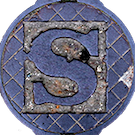Pooja Upadhyay: Difference between revisions
(add new participant) |
(interests) |
||
| Line 6: | Line 6: | ||
}} | }} | ||
{{Workshop Submission | {{Workshop Submission | ||
|Interest= | |Interest=I am a 2nd yr PhD student at University of Maryland, College Park, in the Human Computer Interaction department. My interests lie in studying Information & Communication technologies (ICTs)' history of development (what guided it) and how "users" and "use" have been conceived. ICTs - a constellation of technologies (search systems, phone as an opertaing system, cross-device browsing, web accounts , etc.) are organizing, managing and acting as medium to information in our everyday lives. Various problems of access hide under the claims of "intuitiveness" of such technologies, when their operations are becoming more and more black-box to users. Moreover - not everyone forms the same conceptual models of technologies (how they process our information, work in a web of tech etc. ), further unclear how they form operational models. Our systems don't account for such a diverse understanding of how people make sense of comlpex, interconnected systems from their unique standpoint - social context, past tech exposure etc. One such example is - not everyone uses the same vocabulary to refer to technology functions, tasks etc. | ||
In terms of this workshop - I see a lot of overlapping interests with blackbox models/ narratives of info processing, decentralized & distributed sensemaking, discovery, search, synthesis, accessibility, NLP. | |||
|Frame=Researcher | |Frame=Researcher | ||
|Materials=I am sharing some writing from an ongoing project that explores embedded mental models based on task models within systems, in order to ascertain the role of a system in supporting user’s sensemaking: https://docs.google.com/document/d/17MqbkrsCTZGsKjl5fzvzRG9UG2dkSmW0clcPjr8TYKk/edit# | |Materials=I am sharing some writing from an ongoing project that explores embedded mental models based on task models within systems, in order to ascertain the role of a system in supporting user’s sensemaking: https://docs.google.com/document/d/17MqbkrsCTZGsKjl5fzvzRG9UG2dkSmW0clcPjr8TYKk/edit# | ||
|Organizer Topics=Sensemaking, HCI | |Organizer Topics=Sensemaking, HCI, search, discovery, synthesis | ||
}} | }} | ||
Revision as of 23:19, 5 November 2022
| Pooja Upadhyay | |
|---|---|
| Timezone | America/New York (GMT−05:00/GMT−04:00) |
| Homepage(s) | http://www.poojaupadhyayhci.com/ |
| Institutional Affiliation(s) | University of Maryland
|
| Group(s) | Table 1, Interfaces |
| Table Assignment | Table 1
|
Discord
Page Schemas#Creating a new Schema Page schemas is mostly a handy way to generate boilerplate templates and link them to semantic properties. A Form (using Page Forms is something that is an interface for filling in values for a template.
For an example of how this shakes out, see Category:Participant Template:Participant Form:Participant
- go to a `Category:CategoryName` page, creating it if it doesn't already exist.
- Click "Create schema" in top right
- If you want a form, check the "Form" box. it is possible to make a schema without a form. The schema just defines what pages will be generated, and the generated pages can be further edited afterwards (note that this might make them inconsistent with the schema)
- Click "add template" If you are only planning on having one template per category, name the template the same thing as the category.
- Add fields! Each field can have a corresponding form input (with a type, eg. a textbox, token input, date selector, etc.) and a semantic property.
- Once you're finished, save the schema
- Click "Generate pages" on the category page. Typically you want to uncheck any pages that are already bluelinks so you don't overwrite them. You might have to do the 'generate pages' step a few times, and it can take a few minutes, bc it's pretty buggy.
Workshop Submission
What's your interest in this workshop?
With what "frame" do you approach the workshop? (or identity)?
Researcher
What materials can you contribute to the workshop for consideration?
I am sharing some writing from an ongoing project that explores embedded mental models based on task models within systems, in order to ascertain the role of a system in supporting user’s sensemaking: https://docs.google.com/document/d/17MqbkrsCTZGsKjl5fzvzRG9UG2dkSmW0clcPjr8TYKk/edit#
Organizer-estimated Topics
Sensemaking, HCI, search, discovery, synthesis
